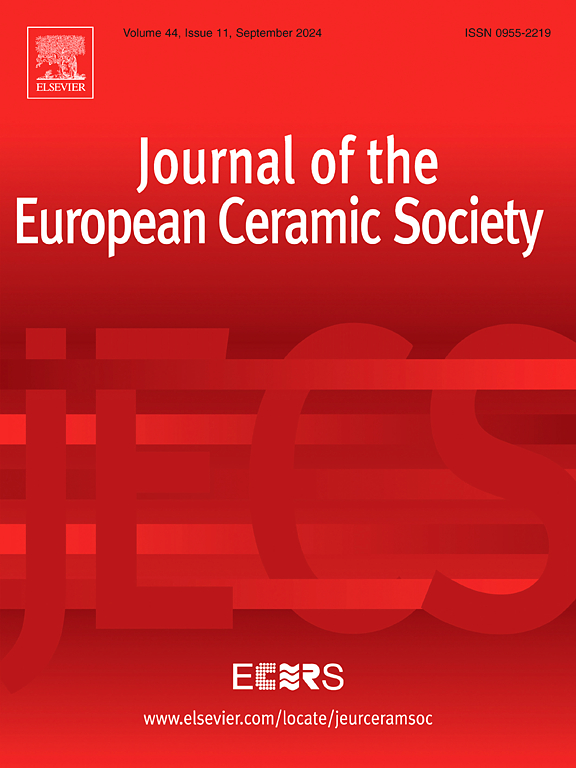The use of niobium carbide as grain growth inhibitor in WC-10Co cemented carbides
IF 5.8
2区 材料科学
Q1 MATERIALS SCIENCE, CERAMICS
Journal of The European Ceramic Society
Pub Date : 2025-05-14
DOI:10.1016/j.jeurceramsoc.2025.117533
引用次数: 0
Abstract
A key parameter in the processing of tungsten carbide materials is the control of the grain growth during the sintering stage. To limit the grain coarsening, grain growth inhibitors are added during the mixing of the powders. Those are transition metal carbides (vanadium, chromium, niobium, molybdenum) that are added in small amounts. Niobium carbide is an efficient GGI and can bring enhanced fracture toughness and reasonable hardness. The influence of niobium carbide (alone or with a combination of other inhibitors) on the grain growth was studied. To ensure a good homogeneity, a two-step ball milling was carried out: the first with cobalt and inhibitors, the second with WC and the doped-cobalt powder. The powders were sintered by vacuum sintering before the characterization of mechanical properties such as hardness and toughness. Niobium carbide is found to be an effective inhibitor since the mechanical properties are superior compared to the other inhibitors. Hardness and fracture toughness are 1858 ± 31 HV30 and 9.8 ± 0.2 MPa√m for NbC alone and 1930 ± 22 HV30 and 9.4 ± 0.3 MPa√m for the mixture NbC+Cr3C2 respectively.
碳化铌作为晶粒生长抑制剂在WC-10Co硬质合金中的应用
烧结阶段晶粒生长的控制是碳化钨材料加工的一个关键参数。为了限制晶粒粗化,在粉末混合过程中加入晶粒生长抑制剂。这些是少量添加的过渡金属碳化物(钒、铬、铌、钼)。碳化铌是一种高效的GGI,可以提高断裂韧性和合理的硬度。研究了碳化铌(单独或与其他抑制剂联合)对晶粒生长的影响。为了保证良好的均匀性,进行了两步球磨:第一步用钴和抑制剂,第二次用WC和掺杂的钴粉。采用真空烧结法制备粉末,并对其进行硬度、韧性等力学性能的表征。碳化铌是一种有效的缓蚀剂,其力学性能优于其他缓蚀剂。硬度和断裂韧性是1858 ± 31 HV30和9.8±0.2 MPa√独自NbC和1930 ± 22 HV30和9.4±0.3 MPa√m的混合物NbC + Cr3C2分别。
本文章由计算机程序翻译,如有差异,请以英文原文为准。
求助全文
约1分钟内获得全文
求助全文
来源期刊

Journal of The European Ceramic Society
工程技术-材料科学:硅酸盐
CiteScore
10.70
自引率
12.30%
发文量
863
审稿时长
35 days
期刊介绍:
The Journal of the European Ceramic Society publishes the results of original research and reviews relating to ceramic materials. Papers of either an experimental or theoretical character will be welcomed on a fully international basis. The emphasis is on novel generic science concerning the relationships between processing, microstructure and properties of polycrystalline ceramics consolidated at high temperature. Papers may relate to any of the conventional categories of ceramic: structural, functional, traditional or composite. The central objective is to sustain a high standard of research quality by means of appropriate reviewing procedures.
 求助内容:
求助内容: 应助结果提醒方式:
应助结果提醒方式:


